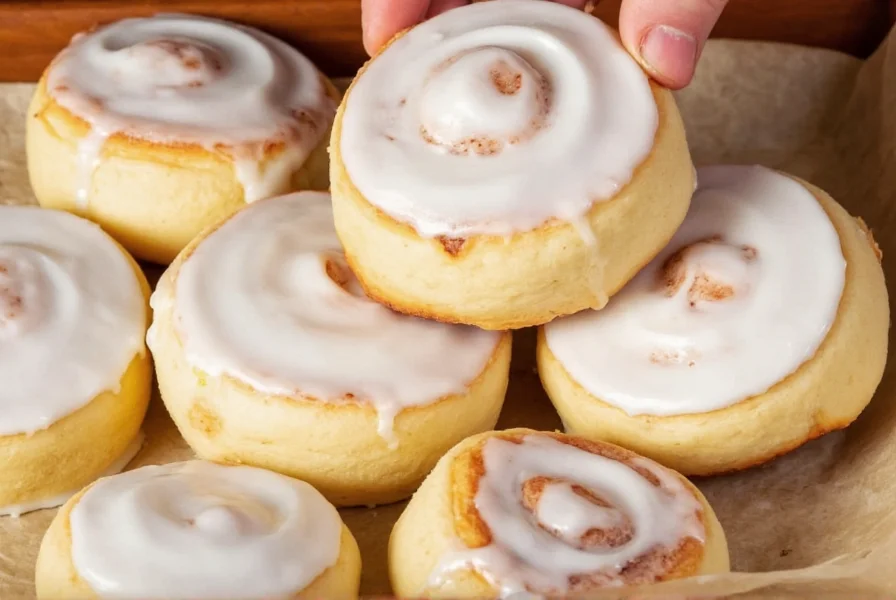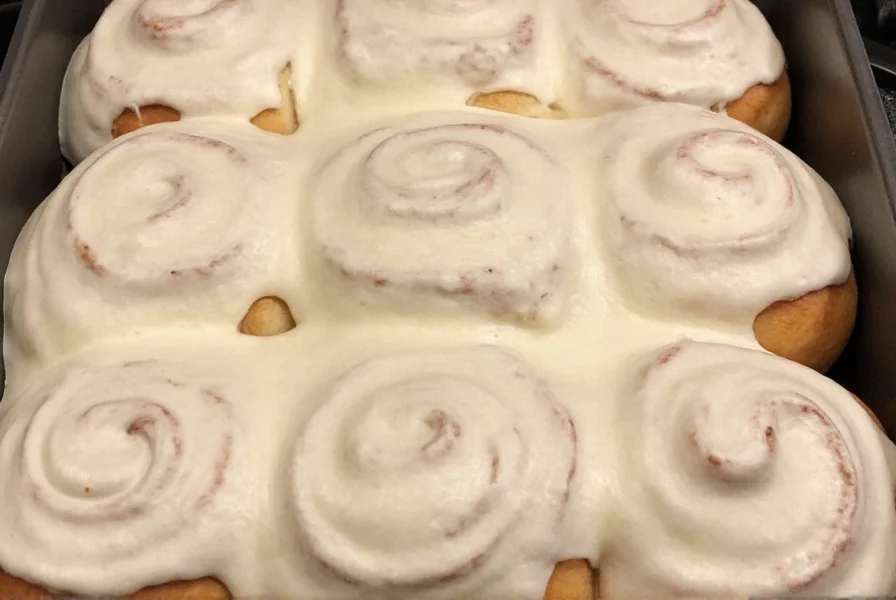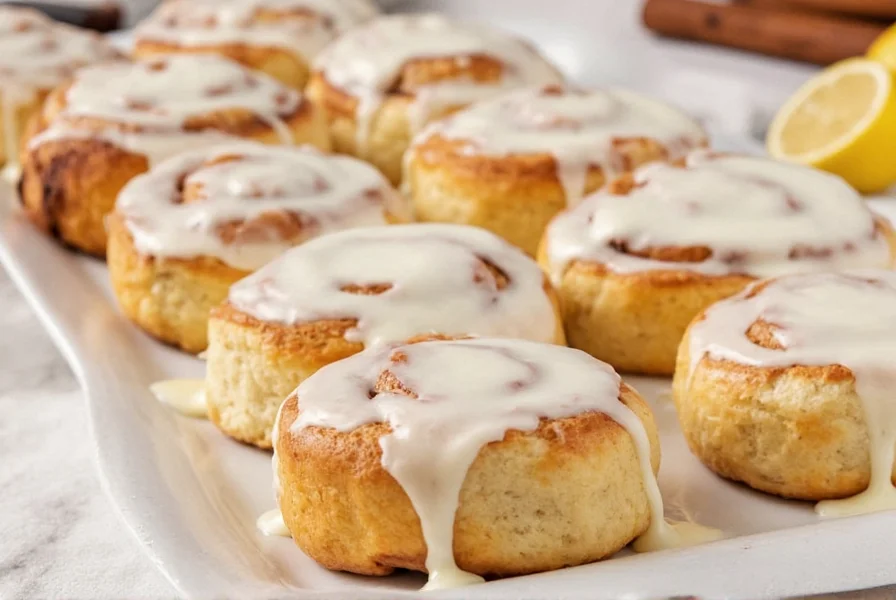When crafting the perfect cinnamon roll, understanding how to properly use heavy cream can transform your baking results from ordinary to extraordinary. This versatile dairy product plays a crucial role in achieving that signature creamy texture and rich flavor profile that makes cinnamon rolls so irresistible. Unlike milk or half-and-half, heavy cream's high fat content (typically 36-40%) creates a stable, velvety icing that doesn't separate or become runny.

The Science Behind Heavy Cream in Cinnamon Roll Icing
Heavy cream's magic lies in its fat composition. When incorporated into powdered sugar and other icing ingredients, the fat molecules create a stable emulsion that maintains consistency at room temperature. This is why professional bakers consistently choose heavy cream over alternatives for cinnamon roll frosting. The fat content prevents the icing from becoming too thin while still allowing it to spread smoothly over warm rolls.
Temperature matters significantly when working with heavy cream in baking applications. For optimal results in cinnamon roll icing, use cold heavy cream straight from the refrigerator. This ensures proper emulsification when mixed with room-temperature powdered sugar. Attempting to use warm cream can cause the icing to become too thin and lose its desirable texture.
Heavy Cream vs. Alternative Dairy Options
Understanding the differences between dairy products helps explain why heavy cream stands out for cinnamon roll applications:
| Dairy Product | Fat Content | Icing Consistency | Flavor Impact |
|---|---|---|---|
| Heavy Cream | 36-40% | Rich, stable, glossy | Pronounced richness |
| Half-and-Half | 10.5-18% | Moderately stable | Mild richness |
| Whole Milk | 3.25% | Thin, may separate | Subtle flavor |
| Evaporated Milk | 8-10% | Thick but may curdle | Caramelized notes |
Perfect Cinnamon Roll Icing with Heavy Cream: Step-by-Step
Creating the ideal heavy cream cinnamon roll frosting requires precision and understanding of ingredient ratios. For a standard batch of 12 cinnamon rolls, you'll need:
- 1 cup powdered sugar (sifted)
- 2-3 tablespoons cold heavy cream
- 1 teaspoon pure vanilla extract
- 2 tablespoons unsalted butter (softened)
- Pinch of salt
Begin by creaming the softened butter until smooth. Gradually incorporate sifted powdered sugar, mixing until fully combined. Add cold heavy cream one tablespoon at a time, watching the consistency closely. The ideal texture should be thick enough to coat the back of a spoon but still pourable. Over-thinning with too much cream is a common mistake that leads to runny icing.
Troubleshooting Common Heavy Cream Icing Issues
Bakers often encounter specific challenges when working with heavy cream in cinnamon roll applications:
Icing Too Thin
If your heavy cream cinnamon roll frosting becomes too thin, immediately stop adding liquid. Place the bowl in the refrigerator for 10-15 minutes to allow the fat to firm up, then gradually incorporate additional sifted powdered sugar, one tablespoon at a time, until desired consistency is achieved. Remember that icing will naturally thicken slightly as it sits.
Icing Too Thick
For icing that's too thick to spread properly, add heavy cream in half-teaspoon increments rather than larger amounts. Whisk vigorously between additions to ensure proper incorporation. Never use warm cream to thin icing, as this can cause separation.

Advanced Techniques for Heavy Cream Cinnamon Roll Applications
While traditional recipes use heavy cream exclusively in the icing, innovative bakers have discovered additional applications that enhance the overall cinnamon roll experience:
Heavy Cream in the Filling
Some artisanal recipes incorporate a small amount of heavy cream directly into the cinnamon-sugar filling. This creates pockets of extra richness throughout the roll. Use approximately 1-2 tablespoons of heavy cream mixed with 1 cup of brown sugar and 2 tablespoons of cinnamon for a standard recipe. The cream helps the filling adhere better to the dough and creates a caramel-like texture when baked.
Heavy Cream-Infused Dough
For an exceptionally tender crumb, replace some of the liquid in your dough recipe with heavy cream. Substitute up to 25% of the total liquid content with heavy cream for noticeable improvement in texture without compromising the dough's structure. This technique works particularly well with enriched dough recipes.
Storage and Serving Considerations
Cinnamon rolls made with heavy cream icing require specific handling to maintain their quality. The high fat content means the icing will firm up significantly when refrigerated. To serve refrigerated rolls, allow them to come to room temperature for 20-30 minutes before serving. For best results, gently rewarm individual rolls in a 300°F oven for 3-5 minutes, then reapply a thin layer of fresh icing.
When storing leftover cinnamon rolls with heavy cream icing, place them in an airtight container with parchment paper between layers. They'll maintain optimal quality for 2-3 days at room temperature or up to 5 days refrigerated. Freezing is not recommended for rolls already topped with heavy cream icing, though unfrosted rolls freeze exceptionally well.
Frequently Asked Questions
Can I substitute heavy cream with milk in cinnamon roll icing?
While you can substitute milk for heavy cream in cinnamon roll icing, the results will differ significantly. Milk creates a thinner, less stable icing that may soak into the rolls rather than sitting attractively on top. For better results when substituting, use evaporated milk or a mixture of milk and melted butter to increase fat content.
How much heavy cream should I use for cinnamon roll icing?
The ideal ratio for cinnamon roll icing with heavy cream is 1 cup powdered sugar to 2-3 tablespoons of heavy cream. Start with 2 tablespoons and add additional cream only if needed to achieve your desired consistency. Remember that the icing will thicken slightly as it sits, so it should be slightly thinner than your target consistency when first prepared.
Why does my heavy cream cinnamon roll icing become runny?
Heavy cream cinnamon roll icing becomes runny primarily due to excessive liquid content or warm ingredients. Using cream that's not sufficiently cold, adding too much cream at once, or applying icing to extremely hot rolls can all cause separation. To prevent this, ensure your cream is cold, add it gradually, and let rolls cool slightly (about 5 minutes) before icing.
Can I make heavy cream cinnamon roll icing ahead of time?
Yes, you can prepare heavy cream cinnamon roll icing up to 24 hours in advance. Store it in an airtight container in the refrigerator, then bring to room temperature and re-whisk before using. The high fat content helps maintain stability, though you may need to adjust consistency with a tiny amount of additional cream or powdered sugar after storage.
Does heavy cream in cinnamon roll icing need refrigeration?
Cinnamon rolls with heavy cream icing should be refrigerated if not consumed within 4 hours, especially in warm environments. The dairy content makes them perishable. Store in an airtight container with parchment between layers. Bring to room temperature before serving for optimal texture and flavor.











 浙公网安备
33010002000092号
浙公网安备
33010002000092号 浙B2-20120091-4
浙B2-20120091-4